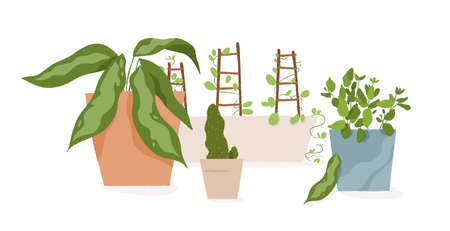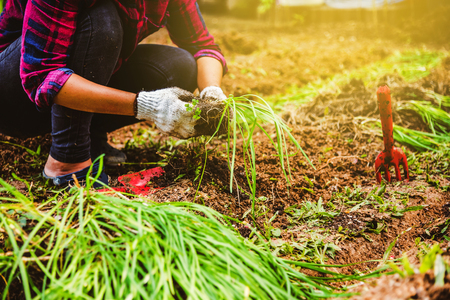1. The Rise of Smart Gardening
Across the United States, more and more people are discovering the joys of home gardening. But this isn’t your grandma’s backyard garden. Thanks to the Internet of Things (IoT), a new wave of smart gardening is making it easier, more efficient, and more sustainable than ever before.
Smart gardening blends technology with traditional horticulture, helping people grow healthier plants with less guesswork. Whether youre living in a suburban neighborhood or a city apartment, IoT-enabled devices are transforming how Americans approach growing their own food, herbs, and flowers at home.
The Tech-Savvy Shift in Gardening
This new trend is being driven by a desire for sustainability, self-sufficiency, and convenience. As people become more eco-conscious and health-focused, they’re looking for ways to grow their own produce while reducing waste and conserving water. That’s where smart garden tech comes in.
IoT devices like soil moisture sensors, automated watering systems, and app-connected planters are giving gardeners real-time data on their plants’ needs. These tools help optimize watering schedules, monitor sunlight exposure, and track plant growth—all from a smartphone or tablet.
Popular Smart Gardening Tools
| Device | Main Function | Benefit |
|---|---|---|
| Smart Soil Sensors | Measure moisture, pH levels, and temperature | Takes the guesswork out of watering and fertilizing |
| Automated Irrigation Systems | Water plants based on real-time conditions | Saves water and ensures consistent care |
| App-Connected Planters | Provide care reminders and tips via smartphone apps | Makes gardening easy for beginners |
A Growing Trend Nationwide
This tech-forward approach to gardening is gaining popularity across the U.S., especially among younger generations who are digitally native and environmentally conscious. Community gardens, urban farms, and even balcony planters are becoming smarter through IoT integration.
The rise of smart gardening represents more than just a technological upgrade—it’s a cultural shift toward sustainability and mindful living. With IoT tools leading the way, home gardening is no longer just a weekend hobby; its becoming a modern lifestyle choice that aligns with today’s values.
2. Key IoT Technologies Powering Smart Gardens
Thanks to the Internet of Things (IoT), home gardening in America is getting a high-tech makeover. These smart garden technologies are making it easier for people to grow healthy plants while saving time, water, and energy. Here’s a look at some of the key IoT devices that are changing how we care for our gardens.
Soil Sensors
Soil sensors are one of the most helpful tools in smart gardening. These small devices go into the soil and track important data like moisture levels, temperature, and nutrient content. With real-time updates sent straight to your smartphone, you’ll always know when your plants need water or fertilizer—no more guesswork.
What Soil Sensors Measure:
| Sensor Feature | What It Does |
|---|---|
| Moisture Level | Tells you when the soil is too dry or too wet |
| Temperature | Monitors if the soil is too hot or cold for planting |
| Nutrient Levels | Tracks nitrogen, phosphorus, and potassium levels |
Climate Monitors
These smart devices keep an eye on your local environment. They measure air temperature, humidity, sunlight exposure, and even wind speed. This information helps gardeners make better decisions about plant placement and care.
Benefits of Climate Monitoring:
- Protects delicate plants from extreme weather
- Helps choose the right time to plant or harvest
- Keeps indoor greenhouses at ideal conditions
Automated Watering Systems
No more dragging hoses around! Smart irrigation systems use data from soil sensors and weather forecasts to water only when needed. Some systems connect to your home Wi-Fi and can be controlled through a mobile app.
Popular Features:
- Custom Schedules: Set watering times based on plant type or season
- Weather Syncing: Automatically skips watering on rainy days
- Zone Control: Adjusts watering by area (e.g., lawn vs. vegetable garden)
Smart Garden Hubs and Apps
A garden hub acts as the brain of your smart garden system. It connects all your devices—sensors, monitors, sprinklers—and sends data to an app where you can see everything in one place. Some hubs even give personalized tips based on the plants you’re growing.
A Few Well-Known Smart Garden Platforms:
| Brand | Main Features |
|---|---|
| Edyn | Soil sensor + smart irrigation + plant database integration |
| BHyve by Orbit | Wi-Fi sprinkler control with weather intelligence |
| Rachio | Saves water using EPA WaterSense-certified scheduling |
The rise of these IoT tools means that even beginner gardeners can achieve expert-level results. Whether youre growing tomatoes in your backyard or herbs on a windowsill, smart technology is here to help every step of the way.

3. Benefits of IoT in Home Gardening
Smart garden technology powered by the Internet of Things (IoT) is transforming how we care for our plants at home. These systems offer a range of practical benefits that make gardening easier, more efficient, and even more rewarding—especially for busy homeowners or those new to gardening.
Increased Yield with Less Guesswork
One of the biggest advantages of smart gardening systems is their ability to optimize plant growth. With sensors that monitor soil moisture, sunlight, temperature, and nutrient levels, these systems provide real-time data to help your plants thrive. You don’t have to guess when to water or fertilize—your smart system tells you exactly what your garden needs and when it needs it.
Water Conservation Made Simple
Overwatering is a common mistake in home gardening. Smart irrigation controllers can significantly reduce water waste by using weather data and soil moisture readings to water only when necessary. This not only helps conserve water but also promotes healthier root development.
| Traditional Gardening | Smart Gardening with IoT |
|---|---|
| Manual watering, often daily | Automated watering based on real-time soil moisture |
| Guesswork on fertilizer timing | Custom alerts for optimal fertilization schedules |
| Wasted water during rainy days | Weather-based watering adjustments |
Convenience at Your Fingertips
Smart garden systems are designed to integrate seamlessly into your everyday life. Most devices connect to mobile apps that let you control everything from irrigation schedules to lighting settings right from your smartphone—even if you’re not at home. Whether you’re traveling or just lounging indoors, you can still keep tabs on your garden.
Popular Features in Garden Apps:
- Soil moisture level notifications
- Weather-based watering suggestions
- Plant care reminders and tips
- Remote control of lights and sprinklers
Real-Time Monitoring for Peace of Mind
The ability to monitor your garden in real time is one of the most empowering features of IoT-based gardening. Sensors placed throughout your garden send live updates straight to your phone, giving you a clear picture of what’s happening at any moment. Some systems even include cameras so you can visually check on your plants without stepping outside.
Key Data You Can Track:
- Current soil moisture and pH levels
- Temperature and humidity conditions
- Sunlight exposure over time
- Status of irrigation system or grow lights
With these benefits, it’s easy to see why more American homeowners are turning to smart gardening solutions. Whether youre growing herbs on a balcony or vegetables in a backyard plot, IoT technology helps take the guesswork out of gardening—making it more productive and enjoyable than ever before.
4. Popular Smart Gardening Devices in the U.S. Market
As smart gardening continues to grow in popularity across the United States, a wide range of IoT-powered devices have emerged to help home gardeners monitor, automate, and optimize their green spaces. From beginner-friendly starter kits to advanced integrated ecosystems, there’s something for every level of gardener looking to make their garden smarter.
Top-Rated Smart Gardening Devices
Here are some of the most popular and highly-rated smart gardening devices available in the U.S. market today:
| Device | Best For | Main Features | Approximate Price |
|---|---|---|---|
| Click and Grow Smart Garden | Beginners & Indoor Gardeners | Automatic watering, built-in grow lights, pre-seeded pods | $100 – $200 |
| Edyn Garden Sensor | Outdoor Garden Monitoring | Soil moisture, sunlight, temperature tracking with mobile alerts | $80 – $100 |
| Rachio Smart Sprinkler Controller | Lawn & Landscape Irrigation | Weather-based watering schedules, app control, EPA WaterSense certified | $150 – $250 |
| AeroGarden Harvest Elite | Indoor Herb & Veggie Growing | Hydroponic system, LED grow lights, touch screen interface | $120 – $180 |
| B-hyve Smart Hose Faucet Timer by Orbit | Backyard & Patio Gardens | Bluetooth/Wi-Fi control, weather-based adjustments, Alexa compatible | $35 – $70 |
User-Friendly Options for Beginners
If youre just getting started with smart gardening, devices like the Click and Grow or AeroGarden offer plug-and-play functionality with minimal setup. These systems take care of light and water needs automatically, making them perfect for apartment dwellers or anyone without a green thumb.
Advanced Systems for Enthusiasts
More experienced gardeners often opt for products like Rachio or Edyn that integrate with other smart home systems and offer deeper customization. These tools allow you to track soil data over time, adjust irrigation based on hyperlocal weather forecasts, and even connect with voice assistants like Alexa or Google Assistant.
The Rise of Ecosystem Platforms
Some companies are now offering full ecosystem platforms where sensors, irrigation controllers, lighting systems, and apps all work together seamlessly. This approach helps gardeners manage everything from soil health to climate control in one place—an exciting development for those serious about optimizing their home gardens using IoT technology.
Choosing the Right Device for Your Needs
Your choice will depend on factors like garden size, indoor vs. outdoor setup, budget, and how hands-on you want to be. Whether youre growing herbs on your kitchen counter or managing a backyard vegetable patch, theres a smart device designed to make gardening easier and more rewarding.
5. Challenges and Future Outlook
While smart gardening powered by IoT brings a ton of benefits, there are still a few bumps in the road that need to be smoothed out. Let’s take a closer look at the challenges many home gardeners face when diving into smart garden tech—and what the future might hold.
Current Challenges
Cost Can Be a Barrier
One of the biggest hurdles for everyday gardeners is cost. Smart sensors, automated watering systems, and connected lighting setups can get pricey—especially if youre looking to outfit an entire backyard or greenhouse. While prices have come down over the years, high-quality devices still require a decent investment.
Connectivity Issues
Many smart gardening tools rely on Wi-Fi or Bluetooth connections to communicate with each other and your smartphone. This becomes tricky if your garden is far from your router or if you’re in a rural area with weak internet signals. Inconsistent connectivity can lead to delays in data updates or missed automation triggers.
Lack of Widespread Adoption
Despite growing interest, not everyone is ready to jump on the smart gardening train just yet. Some people feel overwhelmed by the tech setup, while others simply prefer traditional gardening methods. Plus, there’s often a learning curve involved in using new apps or understanding sensor data.
| Challenge | Description |
|---|---|
| Cost | Smart gardening devices can be expensive upfront. |
| Connectivity | Poor Wi-Fi/Bluetooth signals affect performance. |
| User Adoption | Lack of tech knowledge or preference for traditional methods. |
The Road Ahead: What’s Next?
AI-Driven Gardening
The future looks bright with Artificial Intelligence stepping into the garden. AI could soon analyze historical weather data, plant growth patterns, and soil conditions to provide even more accurate care recommendations—almost like having a personal botanist in your pocket.
More Personalized Plant Care
Soon, smart gardens may be able to tailor care plans specifically for each plant species based on its unique needs. Imagine receiving alerts like “Your basil needs more sunlight today” or “Reduce watering for your succulents this week.” That level of personalization makes it easier for both beginners and seasoned green thumbs to grow healthier plants.
Easier Integration and User-Friendly Apps
The next wave of smart gardening tools will likely focus on simplicity—easier setup processes, intuitive apps, and seamless integration with voice assistants like Alexa or Google Assistant. This will help lower the entry barrier for first-time users.
The journey of IoT in home gardening is just getting started. As technology becomes more accessible and user-friendly, we can expect our gardens to become smarter—and greener—than ever before.


